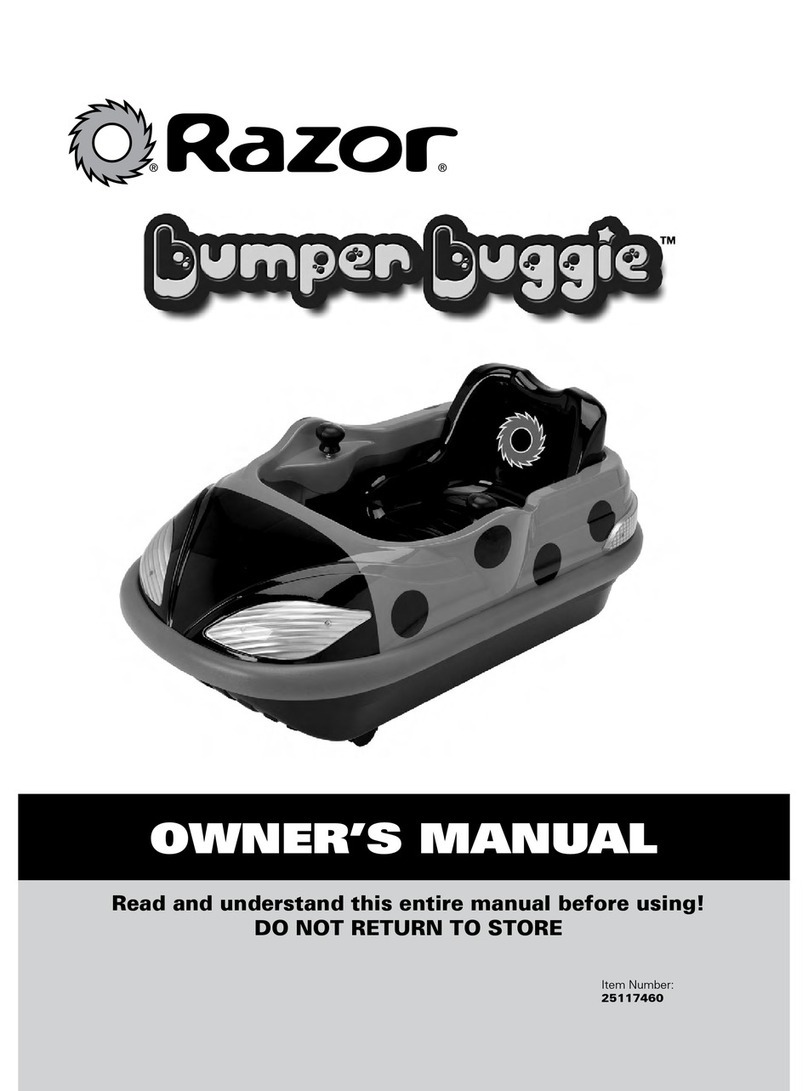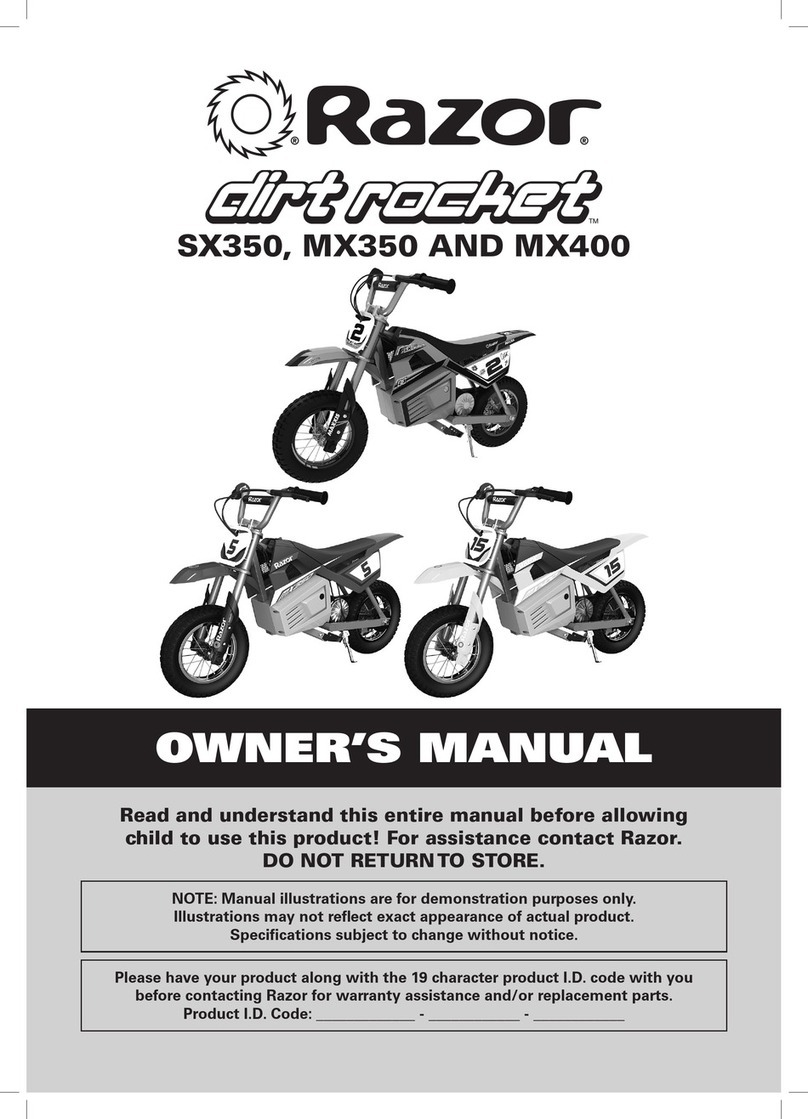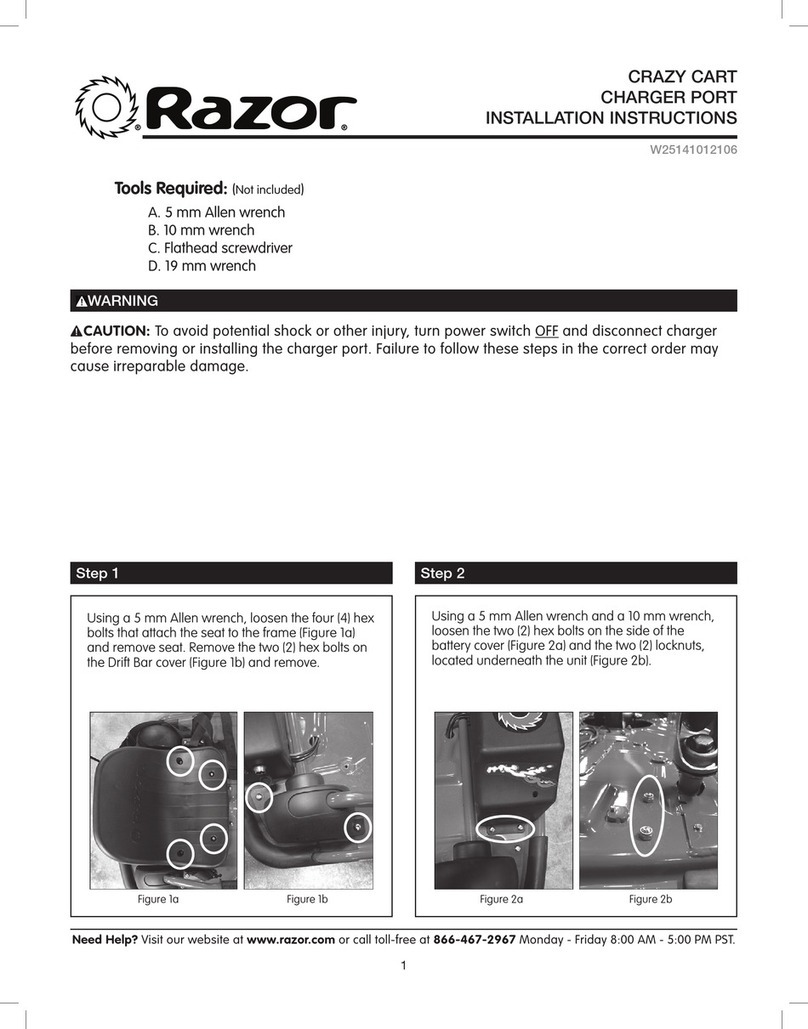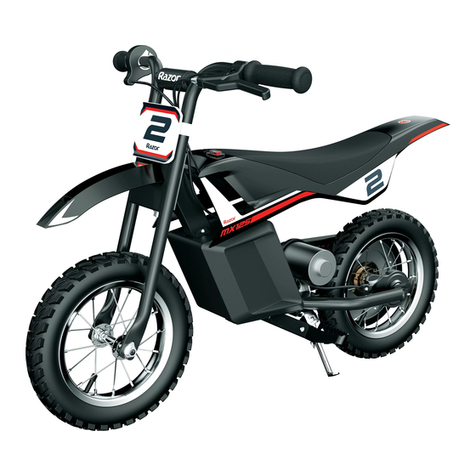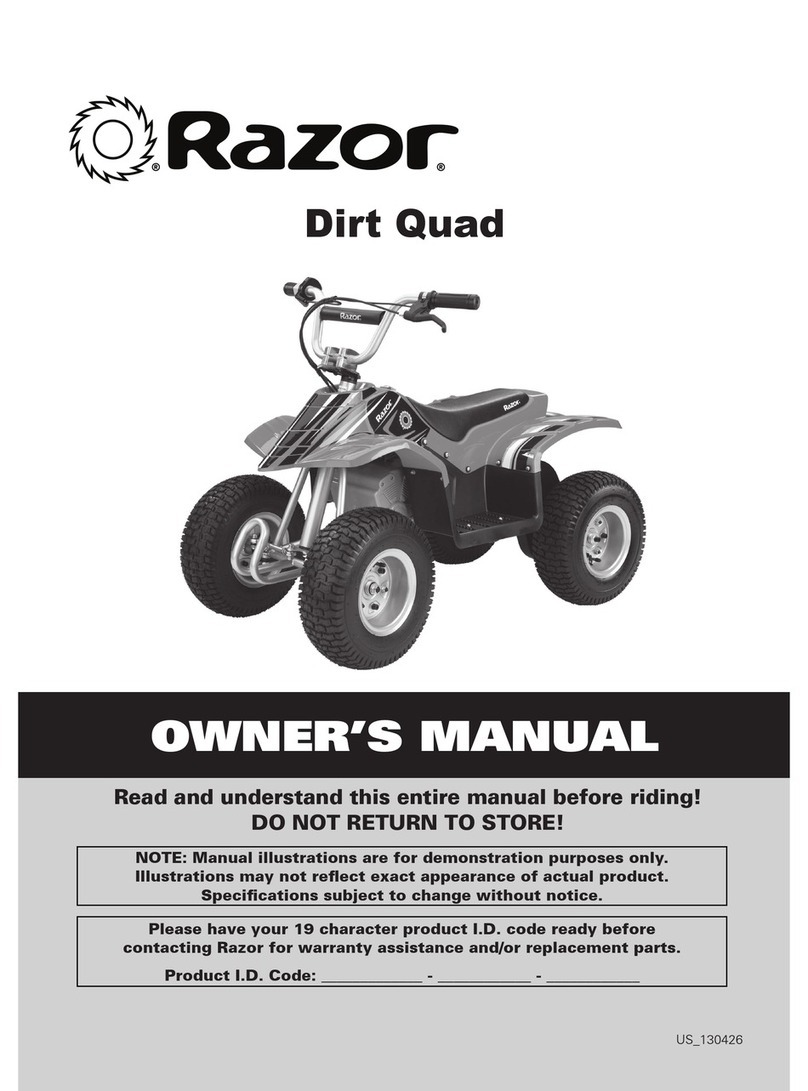WARNING: Riding in the Electric Wagon can be a hazardous
activity. Certain conditions may cause the equipment to fail without
fault of the manufacturer. Like other wheeled products, the Electric
Wagon can and is intended to move, and it is therefore possible to
lose control, fall off and/or get into dangerous situations that no
amount of care, instruction or expertise can eliminate. If such things
occur, your child can be seriously injured or die, even when using
safety equipment and other precautions. USE COMMON SENSE.
This manual contains many warnings and cautions concerning the
consequences of failing to maintain, inspect or properly use your
Electric Wagon. Because any incident can result in serious injury or
even death, we do not repeat the warning of potential serious injury
or death each time such a possibility is mentioned.
APPROPRIATE RIDER USE AND PARENTAL SUPERVISION
Direct adult supervision is required at all times. This manual contains
important safety information. It is your responsibility to review
this information and make sure that all children obey all warnings,
cautions, instructions and safety topics and assure that young riders
are able to safely use this product. Razor recommends that you
periodically review and reinforce the information in this manual
with young riders, and that you inspect and maintain your children’s
wagon to insure their safety.
Any child unable to fit comfortably on the Electric Wagon should not
attempt to ride it.
A parent’s decision to allow his or her child to ride in this
product should be based on the child’s maturity, skill
and ability.
Rider weight does not necessarily mean a child’s size is appropriate
to fit in the Electric Wagon.
Refer to the section on safety for additional warnings.
ACCEPTABLE RIDING PRACTICES AND CONDITIONS
Direct parental supervision is required. The Electric Wagon is meant
to be used only in controlled environments free of potential traffic
hazards and not on public streets. Do not allow your child to ride
in the Electric Wagon in any areas where vehicle traffic is present.
Never use near steps, sloped driveways, hills, roadways, alleys or
swimming pool areas.
Do not ride the Electric Wagon in wet weather. The Electric Wagon
is intended for use on solid, flat, clean and dry surfaces such as
pavement or level ground. Wet, slick or uneven and rough surfaces
may impair traction and contribute to possible accidents. Do not ride
the Electric Wagon in mud, ice, puddles or water. Avoid excessive
speeds that can be associated with downhill rides. Never risk
damaging surfaces such as carpet or flooring by use of a Electric
Wagon indoors. Do not ride at night or when visibility is impaired.
USING THE CHARGER
The charger supplied with the Electric Wagon should be regularly
examined for damage to the cord, plug, enclosure and other parts,
and in the event of such damage, the batteries must not be charged
until the charger has been repaired or replaced.
Use only with the recommended charger.
The charger is not a toy.
Always disconnect from the charger prior to wiping down and
cleaning your Electric Wagon with liquid.
Contains sealed lead acid battery. Battery must be recycled.
FAILURE TO USE COMMON SENSE AND HEED THE
ABOVE WARNINGS INCREASES RISK OF SERIOUS
INJURY. USE WITH APPROPRIATE CAUTION AND
SERIOUS ATTENTION TO SAFE OPERATION.
SAFETY WARNINGS
1
Safety Warnings ............................................................ 1
Before You Begin........................................................... 2
Set-Up ........................................................................ 3-4
Operating the Wagon .................................................... 5
Electric Wagon Parts .................................................. 5-6
Warranty........................................................................ 8
CONTENTS
